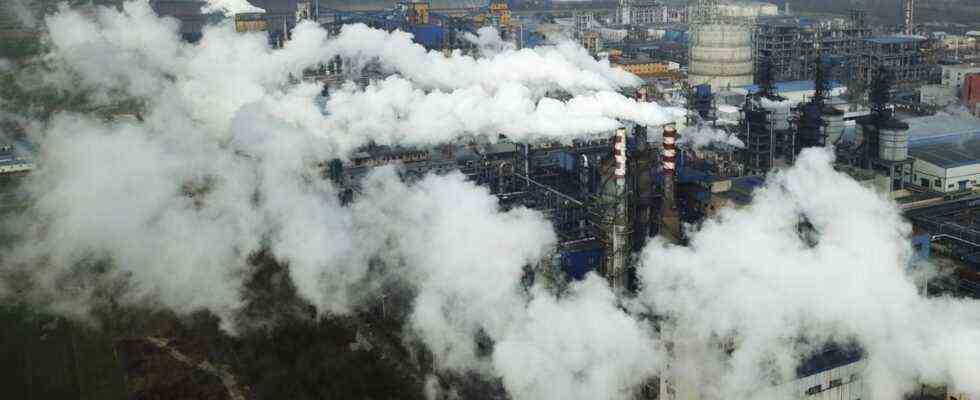After years of waiting, CO2 emissions trading has begun in China in the fight against climate change. The program is intended to help the world’s second largest economy to reduce emissions and to achieve the climate goals set by State and Party leader Xi Jinping in a speech to the United Nations last year. In other words: China’s carbon dioxide emissions will peak in 2030 and by 2060 at the latest, according to Xi’s ambitious target, the People’s Republic must not produce more CO2 than is broken down by natural photosynthesis by plants. According to a study by the American think tank Rhodium Group, China currently emits more greenhouse gases than all developed countries combined.
Several Chinese cities and provinces had already started emissions trading in pilot projects in 2013. At the end of 2015, when the Paris Climate Agreement was signed, President Xi promised to set up an energy exchange.
When trading started in Shanghai on Friday, a ton of the greenhouse gas cost 48 yuan (about 6.30 euros) and rose to 51.23 yuan. On the first day, certificates worth 210 million yuan were traded. Compared to European emissions trading, the Chinese entry prices are still very moderate. A ton of carbon dioxide costs an average of almost 50 euros in Europe.
In the first phase of the world’s largest emissions trading system, more than 2000 Chinese power plants are included in the program. They are responsible for four billion tons of carbon dioxide emissions each year. That is about 40 percent of the total emissions of the People’s Republic. The emissions data from the energy sector are relatively easy to collect and verify compared to other industries that have more complex production processes.
In the medium term, the leadership in Beijing wants to expand trade to other emission-intensive industries, including the oil sector, chemicals, paper production, steel production and the aviation sector. A precise schedule is not yet known. It is also unclear when and whether financial institutions or individual investors may buy certificates; institutional investors will be included as soon as the trading mechanism is fully developed.
The principle works in a similar way to Europe: With CO2 certificates, companies acquire the right to emit greenhouse gases. The aim is to create an incentive to invest money in climate-friendly modernization of the plants. As in the EU, the Chinese government distributes a certain amount of allowances to companies free of charge. Those who need less CO2 than allocated can sell the excess emission rights, but those who emit more have to buy more.
However, there are also gradations: While energy companies have to buy certificates for their coal-fired power plants if the specified limit values are exceeded, the operators of gas-fired power plants can sell emission rights, but do not have to purchase certificates themselves if they emit more carbon dioxide than originally allocated. This is intended to promote gas power as a bridging technology in the People’s Republic.

